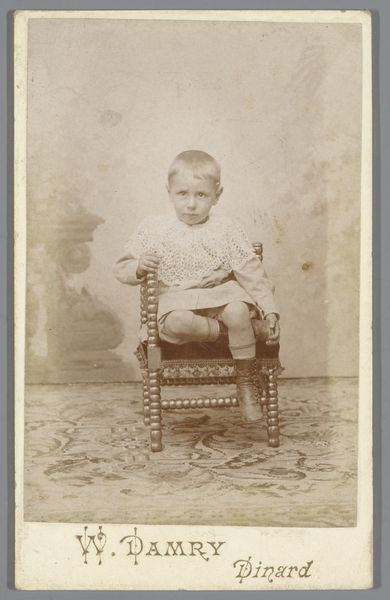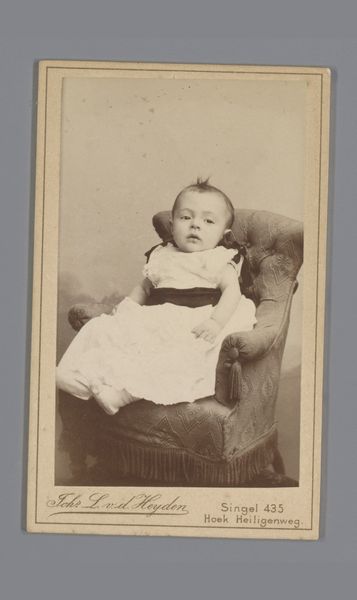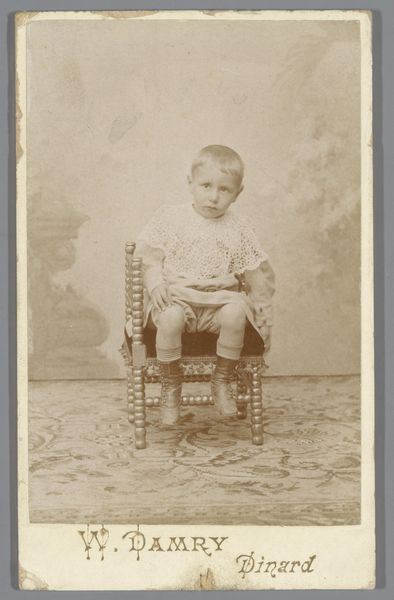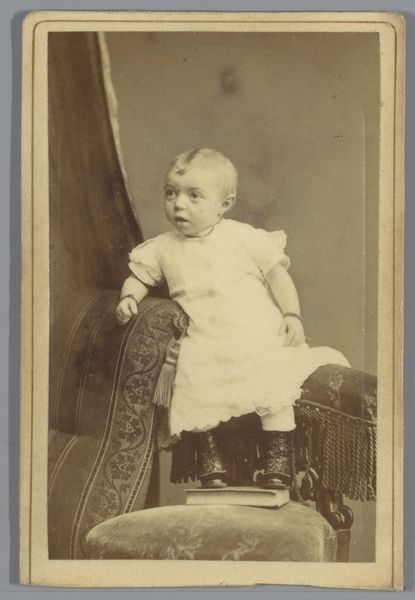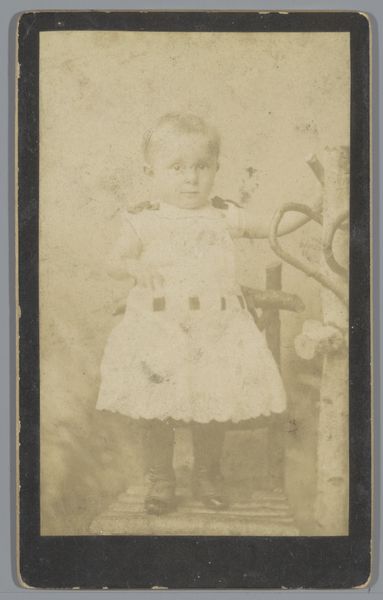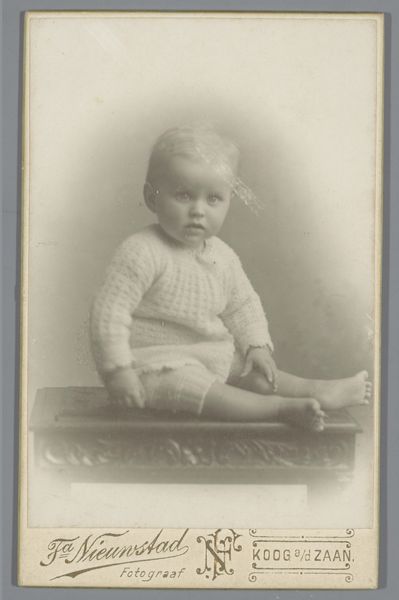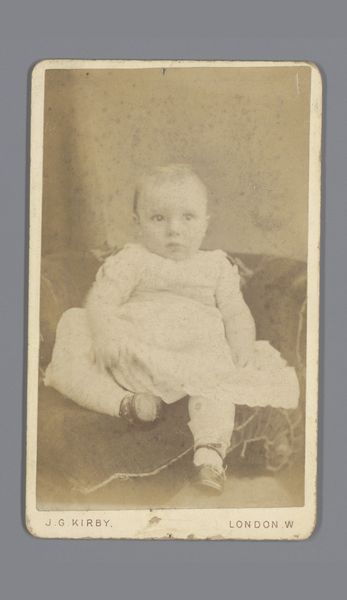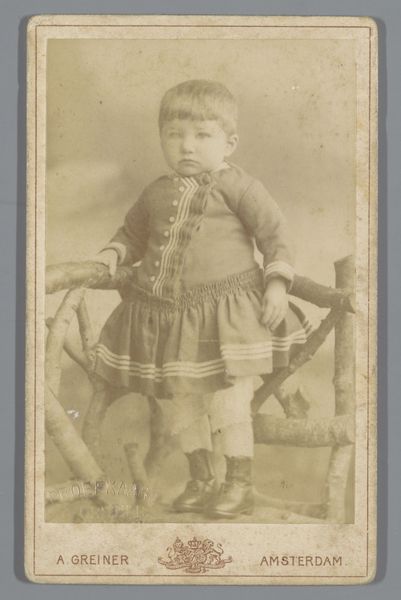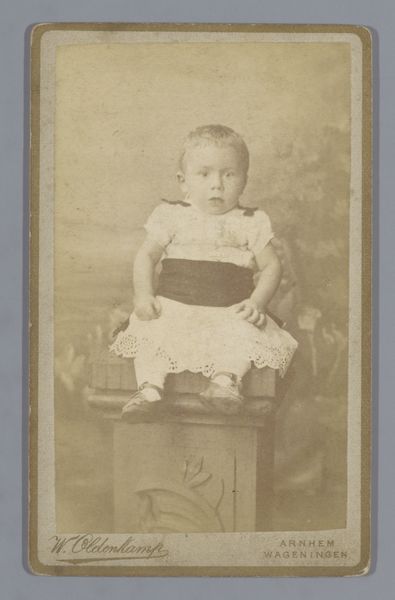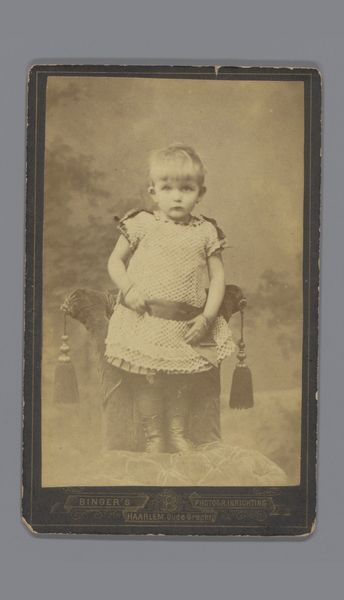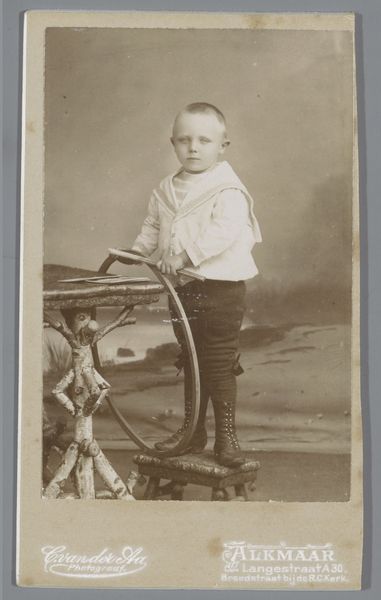
Dimensions: height 104 mm, width 64 mm
Copyright: Rijks Museum: Open Domain
Curator: This photograph, simply titled "Portrait of an Unknown Child, Standing Next to a Gate", was taken sometime between 1892 and 1902. It is attributed to Sigmund Löw and showcases a style influenced by Impressionism. Editor: It has such a wonderfully somber mood, doesn't it? The tones, though likely a product of the photographic process, give a sense of melancholy. Curator: Precisely, and I think it invites a deeper inquiry. Consider the rigid pose, typical for portraits of that era. Yet, it can also symbolize the restrictive roles placed upon children within that specific social context. Clothing, for instance, signaled status, and dress codes enforced strict gender and class boundaries. Editor: I am immediately struck by the lines created by the gate and how they serve to frame the figure. Note, too, how the lines in the child's dress lead the eye across the form. The photographic impression itself has a depth produced by subtle manipulation of light. Curator: That brings us back to the social impact. This photographic strategy subtly shapes our understanding of this image in terms of what children of that era endured—lack of autonomy, social expectations. We’re not just viewing a portrait but seeing an entry point into a life shaped by societal norms. Editor: True, yet Löw also allows the child a kind of defiant gaze. They engage directly, pushing beyond the potential restrictions you mentioned and presenting an emotive presence within the formal portrait setting. Curator: The photograph as a constructed and performative act underscores its historical importance, inviting contemplation on the intertwined dynamics of class, identity, and childhood in a changing world. Editor: It does encourage us to rethink these static portraits not as passive impressions but potent constructions of artistry in relation to time.
Comments
No comments
Be the first to comment and join the conversation on the ultimate creative platform.
